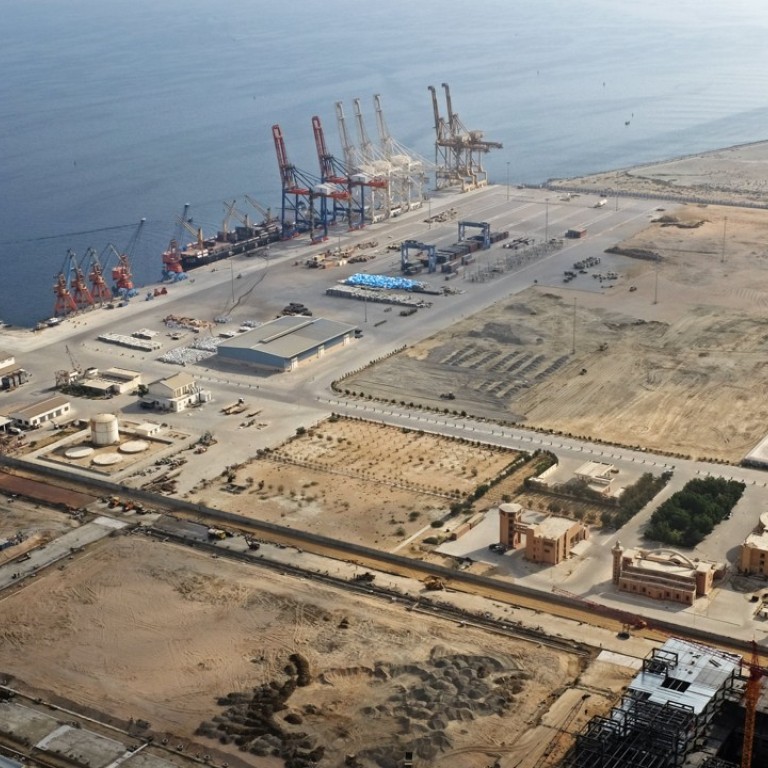
Beware the infrastructure wars of Asia as great powers compete for prominence and contracts
- In simple terms, China wants to get the work done; Japan wants to ensure the work is of quality while the US wants private enterprises to get the contracts
Japanese prime minister Shinzo Abe may not bestride the world like a colossus (as did Shakespeare’s Julius Caesar) but he does have a foot in both camps involved in Asia’s infrastructure wars.
This could mean either that Japan ends up getting the best of both worlds, or that it falls between two stools.
Abe entered the camp of China’s president Xi Jinping last week, and pledged cooperation in third-country infrastructure projects included in China’s Belt and Road Initiative (BRI). A day or two later in Tokyo, he promised to cooperate with India’s prime minister Narendra Modi on infrastructure, including the Asia-Africa Growth Corridor project.
Another combatant in these infrastructure wars (and it is no exaggeration to call them that) is US President Donald Trump, whose administration has launched an Indo-Pacific Forum with the aim of promoting infrastructure and other investments across a swathe of Asia and beyond.
Cooperation among the world’s three biggest economies on infrastructure, where financing needs run into tens of trillions of dollars, is of course no a bad thing. The problem lies in their different perceptions of how to go about building and financing these projects in transport, energy and communications.
Putting this in rather simple terms, China wants to get the job done and get on with building infrastructure projects, Japan wants to make sure that the projects comprise quality infrastructure, while the US wants to be sure that (American and other) private enterprises get the job, instead of Chinese state enterprises.
That’s all well and good, if this involves the three powers building infrastructure in their own countries, according to the standards and practices of each. But of course, it often does not. It is about ventures in third countries and there are no international rules or standards governing that.
This difference of emphasis was obvious in Beijing when Xi welcomed cooperation on BRI projects that “present a new opportunity for Sino-Japan collaboration,” while Abe said he “looked forward to incorporating openness, transparency and the international community’s shared thinking.”
When Abe met Modi in Tokyo, the two leaders stressed the need for “quality” infrastructure where cooperation is concerned. This may sound inconsequential but the differences run deep and will affect cooperation.
In 2015, Japan’s government announced a programme of Quality Infrastructure Investment for Asia’s Future, for which US$110 billion of Japanese funding was promised.This appeared to be aimed at outbidding the US$100 billion of capital involved in China’s Asian Infrastructure Investment Bank (AIIB) plan.
The “quality infrastructure” label also seemed designed to contrast with China’s low quality-high volume image in providing infrastructure to Africa and elsewhere. Stepping up the rivalry with China, Abe and Modi then announced a plan for an Asia-Africa Growth Corridor which looked very similar to China’s BRI.
The Trump administration responded with a kind of composite scheme for an Indo-Pacific Business Forum or consortium to be created in collaboration with Japan and India, along with Indonesia and Australia, for investing in infrastructure and other areas across a region broadly similar to that covered by China’s BRI.
Much of this has to do with deep-seated and long-standing rivalries between Japan and China, and between India and China where strategic and border issues are concerned. These have been exacerbated recently by China’s proposed transport corridor that passes through a Pakistani-controlled part of Kashmir as part of the BRI.
India and Japan are already involved in infrastructure projects in India (the Mumbai-Ahmadabad high-speed rail project, and the Kolkata Metro project) as well as in international motorways linking India with Thailand via Myanmar. Japan is a major player too in Southeast Asia’s multi-nation Mekong Delta infrastructure development.
It is inevitable that Japanese, Indian, Chinese and US interests (as well as those of Germany, the UK, France and others) need to be heavily involved in building infrastructure in Asia, the world’s most populous and fastest-growing region. So, how is all this cooperative effort supposed to be coordinated and financed?
The World Bank, Asian Development Bank and other regional agencies are supposed to play a key role in fulfilling this task, but in reality their direct financial contribution to (actual and prospective) infrastructure costs is relatively tiny. That is one reason why China set up the AIIB and the BRICS bank or New Development Bank - to provide extra finance.
It is also why China launched its bilateral BRI, and why Japan and India subsequently started working on the Asia-Africa Growth Corridor (that and their rivalry with China of course). Putting a positive complexion on the Trump initiatives, one could say that he too was concerned with closing the infrastructure financing gap.
But all this has degenerated into infrastructure wars with no mechanism capable of coordinating rival efforts and little apparent interest in creating one.
Abe seems intent on performing a diplomatic balancing act between Japan and China, India and the US, but that will not substitute for a workable model of global cooperation, and his efforts could end up looking like little more than futile self interest. As with trade, multilateralism (let alone globalism) seems to be taking a back seat to efforts to promote national interests over those of partners who are living in an interconnected world.
Anthony Rowley is a veteran journalist specialising in Asian economic and financial affairs

